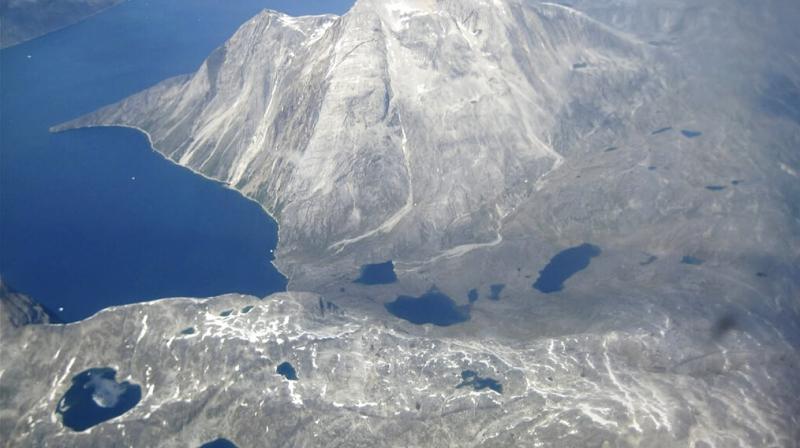Walloped by heat wave, Greenland sees massive ice melt

Greenland, the world’s largest island, is a semi-autonomous Danish territory between the Atlantic and Arctic oceans that has 82pc of its surface covered in ice.
The area of the Greenland ice sheet that is showing indications of melt has been growing daily, and hit a record 56.5pc for this year on Wednesday, said Ruth Mottram, a climate scientist with the Danish Meteorological Institute. She says that’s expected to expand and peak on Thursday before cooler temperatures slow the pace of the melt.
More than 10 billion tons (11 billion U.S. tons) of ice was lost to the oceans by surface melt on Wednesday alone, creating a net mass ice loss of some 197 billion tons (217 billion U.S. tons) from Greenland in July, she said.
“It looks like the peak will be today. But the long-term forecast is for continuing warm and sunny weather in Greenland, so that means the amount of the ice loss will continue,” she said Thursday in a telephone interview from Copenhagen.
The scope of Wednesday’s ice melt is a number difficult to grasp. To understand just how much ice is being lost, a mere 1 billion tons — or 1 gigaton — of ice loss is equivalent to about 400,000 Olympic-sized swimming pools, the Danish Meteorological Institute said. And 100 billion tons (110 billion U.S. tons) corresponds to a 0.28 mm (0.01 inch) rise in global sea levels.
Mottram said since June 1 — roughly the start of the ice-loss season — the Greenland ice sheet has lost 240 gigatons (240 billion metric tons) this year. That compares with 290 gigatons lost overall in the 2012 melt season, which usually goes through the end of August.
A June 2019 study by scientists in the U.S. and Denmark said melting ice in Greenland alone will add between 5 and 33 centimeters (2 to 13 inches) to rising global sea levels by the year 2100. If all the ice in Greenland melted — which would take centuries — the world’s oceans would rise by 7.2 meters (23 feet, 7 inches), the study found.
The current melting has been brought on by the arrival of the same warm air from North Africa and Spain that melted European cities and towns last week, setting national temperature records in Belgium, Germany, Luxembourg, the Netherlands and Britain.
In Russia, meanwhile, forest fires caused by hot, dry weather and spread by high winds are raging over nearly 30,000 square kilometers (11,580 sq. miles) of territory in Siberia and the Russian Far East — an area the size of Belgium. The smoke from these fires, some of them in Arctic territory, is so heavy it can easily be seen in satellite photos and is causing air quality problems in towns and some cities, including Russia’s third-largest city, Novosibirsk. Residents want the Russian government to do more to fight the blazes.
Greenland has also been battling a slew of Arctic wildfires, something that Mottram said was uncommon in the past.
In Greenland, the melt area this year is the second-biggest in terms of ice area affected, behind more than 90pc in 2012, said Mark Serreze, director of the Snow and Ice Data Center in Boulder, Colorado, which monitors ice sheets globally. Records go back to 1981.
A lot of what melts can later refreeze onto the ice sheet, but because of the conditions ahead of this summer’s heat wave, the amount of ice lost for good this year might be the same as in 2012 or more, according to scientists. They noted a long build up to this summer’s ice melt — including higher overall temperatures for months — and a very dry winter with little snow in many places, which would normally offer some protection to glacier ice.
